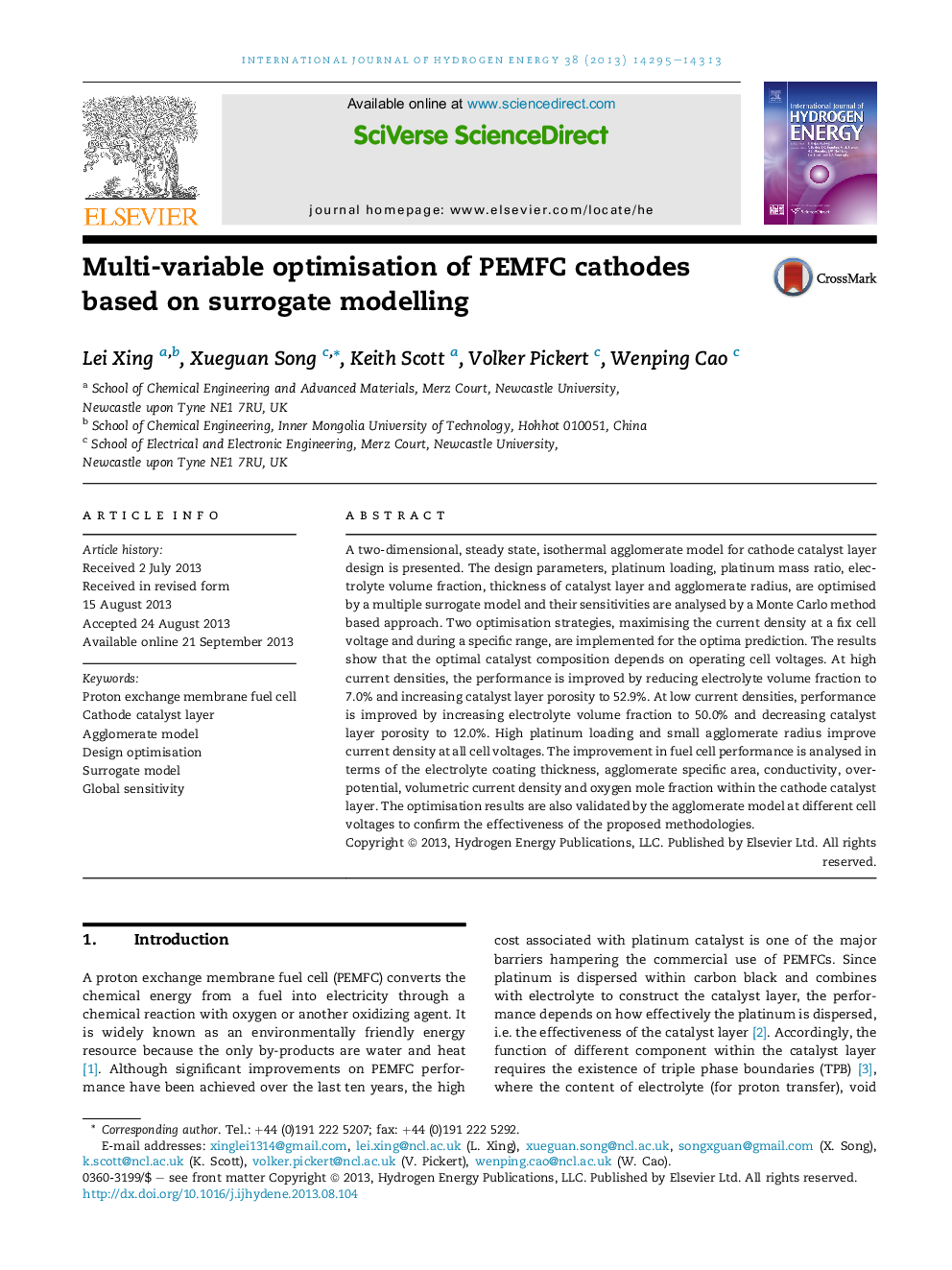| Article ID | Journal | Published Year | Pages | File Type |
|---|---|---|---|---|
| 1281391 | International Journal of Hydrogen Energy | 2013 | 19 Pages |
•An improved two-dimensional, steady state and isothermal PEMFC model is developed.•Surrogate model is adopted for cathode catalyst layer optimisation.•Global sensitivity analysis is used to investigate the influence of five design variables.•A novel optimisation strategy considering variation of cell voltages is presented.
A two-dimensional, steady state, isothermal agglomerate model for cathode catalyst layer design is presented. The design parameters, platinum loading, platinum mass ratio, electrolyte volume fraction, thickness of catalyst layer and agglomerate radius, are optimised by a multiple surrogate model and their sensitivities are analysed by a Monte Carlo method based approach. Two optimisation strategies, maximising the current density at a fix cell voltage and during a specific range, are implemented for the optima prediction. The results show that the optimal catalyst composition depends on operating cell voltages. At high current densities, the performance is improved by reducing electrolyte volume fraction to 7.0% and increasing catalyst layer porosity to 52.9%. At low current densities, performance is improved by increasing electrolyte volume fraction to 50.0% and decreasing catalyst layer porosity to 12.0%. High platinum loading and small agglomerate radius improve current density at all cell voltages. The improvement in fuel cell performance is analysed in terms of the electrolyte coating thickness, agglomerate specific area, conductivity, overpotential, volumetric current density and oxygen mole fraction within the cathode catalyst layer. The optimisation results are also validated by the agglomerate model at different cell voltages to confirm the effectiveness of the proposed methodologies.
